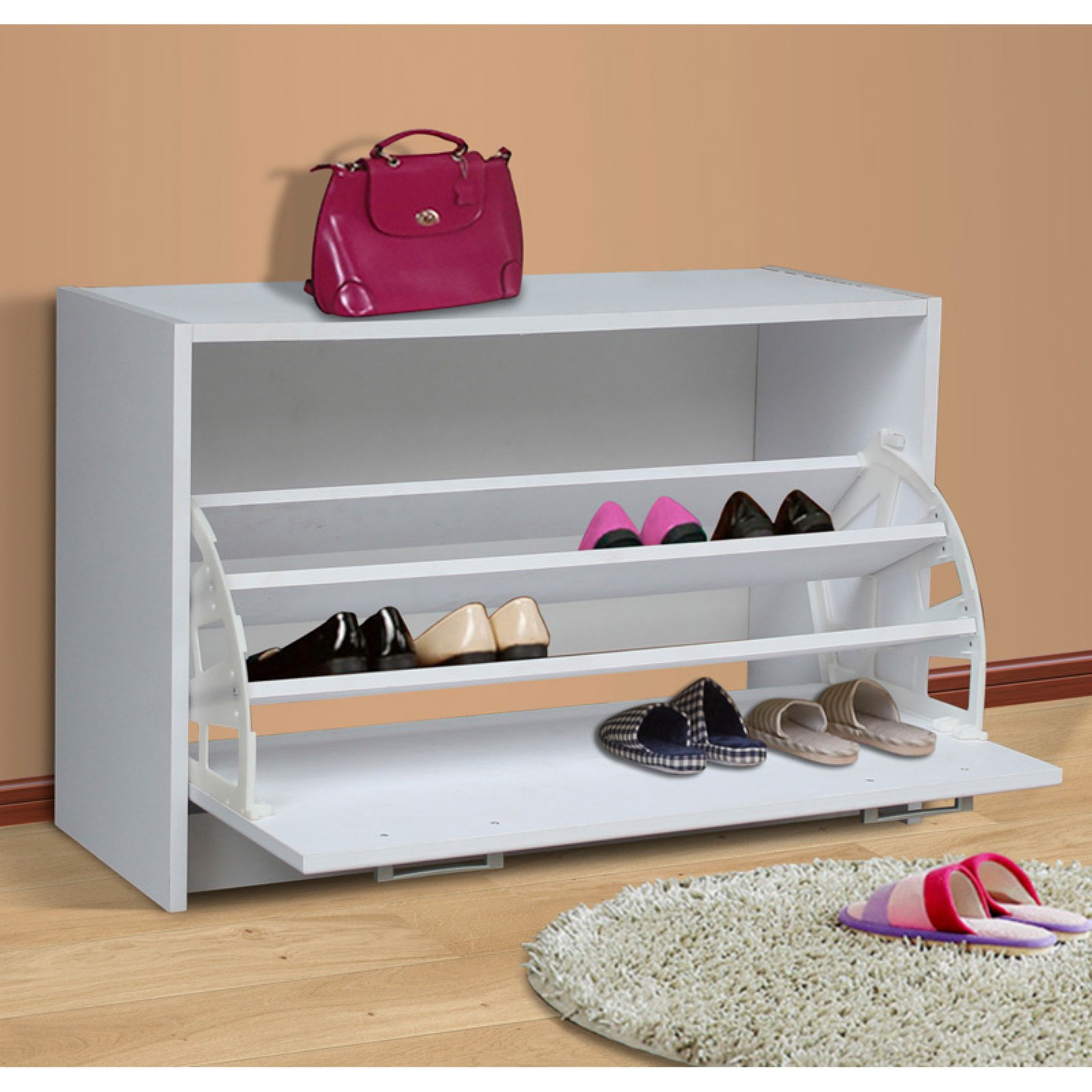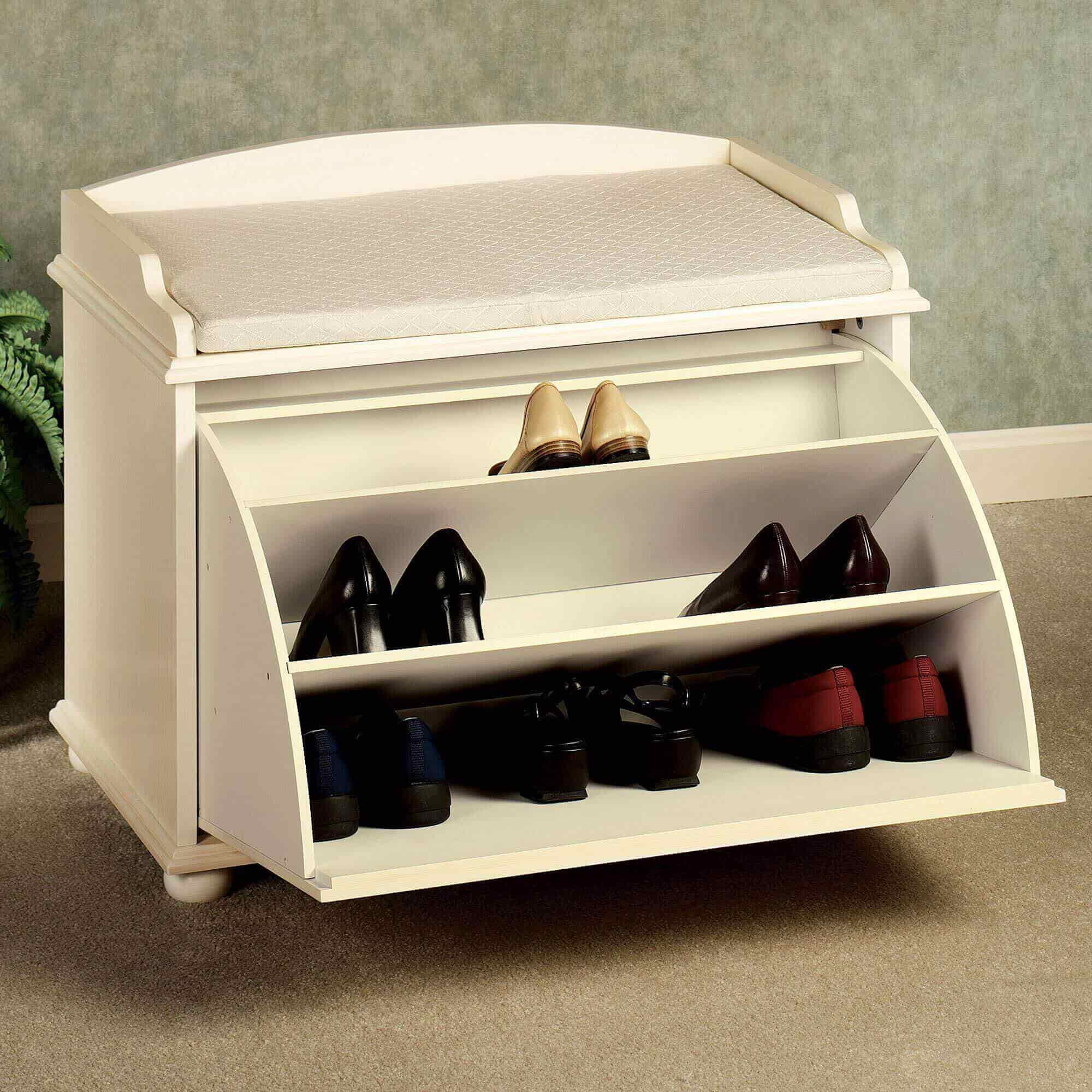Small Shoe Cabinet Design Considerations: Small Shoe Cabinet With Doors

A small shoe cabinet can be a practical and stylish addition to any home, but maximizing storage space within its limited dimensions is crucial. By thoughtfully considering the design elements, you can create a functional and visually appealing shoe storage solution that meets your needs.
Optimizing Interior Layout
The interior layout of a small shoe cabinet is paramount to its functionality. Efficiently utilizing every inch of space can accommodate a significant number of shoes while maintaining order and accessibility.
- Adjustable Shelves: Adjustable shelves allow you to customize the height of each compartment, accommodating shoes of varying sizes and heights. This flexibility ensures that all your footwear can be stored neatly without unnecessary wasted space.
- Drawer Placement: Incorporating drawers into the design can provide additional storage for smaller items like shoe polish, insoles, or accessories. Placing drawers at the bottom of the cabinet allows for easy access and prevents them from obstructing the main shoe storage area.
- Door Hinges: Opting for hinges that open outwards or have a wider opening angle maximizes accessibility to the interior, especially in smaller cabinets. This allows you to easily view and retrieve your shoes without the need for excessive bending or reaching.
Material Selection
The materials used in constructing a small shoe cabinet significantly impact its aesthetic appeal, durability, and overall character. Choosing the right materials can create a visually appealing and functional piece that complements your home décor.
- Wood: Wood is a classic and versatile material that lends a natural warmth and elegance to any shoe cabinet. It can be stained or painted to match existing furniture, creating a cohesive look. Solid wood options offer durability and longevity, while engineered wood alternatives provide affordability and stability.
- Metal: Metal, particularly steel or aluminum, offers a modern and industrial aesthetic. It is known for its strength and durability, making it ideal for high-traffic areas. Metal cabinets can be powder-coated in various colors to create a unique and personalized look.
- Glass: Glass doors or panels can add a touch of sophistication and allow you to showcase your shoe collection. Clear glass provides a clear view of the contents, while frosted or patterned glass offers a more subtle and elegant look. It is important to consider the practicality of glass in high-traffic areas, as it can be prone to scratches or breakage.
Popular Styles and Features

Small shoe cabinets come in various styles, each catering to different aesthetic preferences and functional needs. Understanding the popular styles and their features will help you choose the perfect cabinet for your home.
Styles, Small shoe cabinet with doors
Different styles of small shoe cabinets cater to diverse tastes and home decor. Here are some of the most popular styles:
- Contemporary: Characterized by clean lines, simple designs, and minimalist aesthetics. They often feature sleek materials like metal, glass, or high-gloss finishes. These cabinets are perfect for modern homes with a focus on functionality and space-saving designs.
- Traditional: Embraces classic designs with intricate details, ornate carvings, and rich wood finishes. They often feature warm colors and a timeless appeal, making them suitable for homes with a traditional or rustic ambiance.
- Minimalist: Emphasizes simplicity and functionality, with a focus on essential elements and clean lines. These cabinets typically feature neutral colors, uncluttered designs, and minimal embellishments, making them ideal for modern homes seeking a streamlined look.
Door Styles
The choice of door style significantly impacts the functionality and aesthetics of a small shoe cabinet. Here are some popular door styles and their benefits and drawbacks:
- Sliding Doors: Offer space-saving advantages, especially in smaller spaces. They slide horizontally, requiring minimal space to open and close. However, they may be less convenient for accessing individual shoes, and some designs can be more expensive.
- Hinged Doors: The most common door style, offering easy access to the cabinet’s contents. They swing open on hinges, providing a clear view of the shoes. However, they require adequate space for opening and closing, which can be a challenge in cramped areas.
- Louvered Doors: Feature horizontal slats that allow for ventilation and air circulation, preventing shoe odors. They offer a stylish and airy aesthetic, but they may not provide complete privacy for the shoes stored inside.
Features
Small shoe cabinets come with various features to enhance storage capacity and organization. The table below compares different features based on storage capacity and organization options:
| Feature | Storage Capacity | Organization Options |
|---|---|---|
| Number of Shelves | More shelves offer higher storage capacity | Allows for separating shoes by type, season, or usage |
| Adjustable Shelves | Provides flexibility to accommodate shoes of different sizes and heights | Enables customizing the storage space based on individual needs |
| Drawers | Offers additional storage space for accessories, shoe polish, or other items | Provides a dedicated space for smaller items, keeping the main compartment organized |
| Shoe Racks | Maximizes storage space by utilizing vertical space efficiently | Allows for storing shoes vertically, saving floor space |
| Ventilation System | Improves air circulation, reducing shoe odor and moisture buildup | Ensures a fresh and hygienic storage environment |
Tips for Choosing and Using a Small Shoe Cabinet

Choosing the right small shoe cabinet can be a game-changer for organizing your footwear and maximizing space in your home. Here’s a comprehensive guide to help you make an informed decision and get the most out of your small shoe cabinet.
Selecting the Right Size and Style
The size and style of your small shoe cabinet should be carefully considered based on your available space and storage needs. A well-chosen cabinet can blend seamlessly with your existing decor while providing efficient storage solutions.
- Measure your space: Before you start shopping, measure the area where you plan to place the cabinet. This will help you determine the maximum dimensions you can accommodate. Consider the height, width, and depth of the cabinet to ensure it fits comfortably in your chosen location.
- Consider the number of shoes: Think about how many pairs of shoes you need to store. Choose a cabinet with enough shelves or compartments to accommodate your collection. A small cabinet with multiple tiers or drawers can often hold more shoes than a larger cabinet with fewer shelves.
- Style and design: Select a cabinet that complements your existing decor. Consider the materials, colors, and overall aesthetic of the cabinet. Options include sleek and modern designs, traditional styles, or rustic and farmhouse aesthetics.
- Doors and compartments: Choose a cabinet with doors that close securely to keep your shoes dust-free and protected. Consider the number of compartments and their size to ensure that your shoes fit comfortably and are easily accessible.
Organizing Shoes in a Small Shoe Cabinet
Organizing your shoes within a small shoe cabinet is essential for maximizing space and maintaining order. Utilizing various storage solutions can help you keep your footwear tidy and easily accessible.
- Shoe dividers: Shoe dividers are excellent for separating different types of shoes, such as sneakers, heels, or sandals. They can also help prevent shoes from collapsing on top of each other. Many shoe cabinets come with built-in dividers, but you can also purchase separate dividers to customize your storage.
- Shoe racks: Shoe racks are ideal for maximizing vertical space within your cabinet. They can be stacked on top of each other to create multiple levels of storage. Consider using tiered shoe racks to maximize vertical space, especially in cabinets with limited depth.
- Vertical storage solutions: Vertical storage solutions, such as hanging shoe organizers or shoe shelves, are perfect for small spaces. They allow you to store shoes upright, saving floor space and keeping them organized. These solutions are particularly useful for storing sneakers or sandals, as they can be easily accessed without taking up too much space.
- Clear shoe boxes: Using clear shoe boxes allows you to easily identify the contents without having to open them. This is especially helpful for storing seasonal shoes or shoes that you don’t wear regularly. You can label the boxes with the type of shoe or the season for easy retrieval.
Ventilation and Maintenance
Proper ventilation and regular maintenance are crucial for keeping your small shoe cabinet clean, odor-free, and in good condition. A well-ventilated cabinet helps to prevent moisture buildup, which can lead to mildew and unpleasant odors.
- Ventilation: Ensure that your shoe cabinet has adequate ventilation to allow air circulation. Some cabinets come with built-in ventilation holes or slats, while others may require you to create your own ventilation system. Consider adding a small fan or dehumidifier to the cabinet if you live in a humid climate.
- Regular cleaning: Regularly clean the inside of your shoe cabinet with a damp cloth and mild detergent. This will help to remove dust, dirt, and any spills. It’s also a good idea to wipe down the shelves and compartments with a disinfectant solution to prevent the growth of bacteria and mold.
- Shoe care: Before storing your shoes in the cabinet, make sure they are clean and dry. Remove any dirt or debris from the soles and laces. Consider using shoe trees or cedar shoe inserts to help absorb moisture and prevent odor. Regularly rotate your shoes to allow them to air out and prevent the buildup of moisture.
A small shoe cabinet with doors can be a practical solution for organizing your footwear, but if you need more storage space, you might consider a larger option. For a more spacious and versatile storage solution, a 48 inch wide cabinet with doors could be ideal.
It can accommodate a wide range of items, including shoes, while maintaining a sleek and organized appearance.
A small shoe cabinet with doors can be a stylish and practical addition to any entryway. If you’re looking for inspiration for building your own cabinet, consider incorporating elements of shaker style, which is known for its clean lines and simplicity.
You can find detailed plans for shaker wall cabinets, like those found at shaker wall cabinet plans , which can help you create a beautiful and functional shoe cabinet that complements your home’s aesthetic.
